





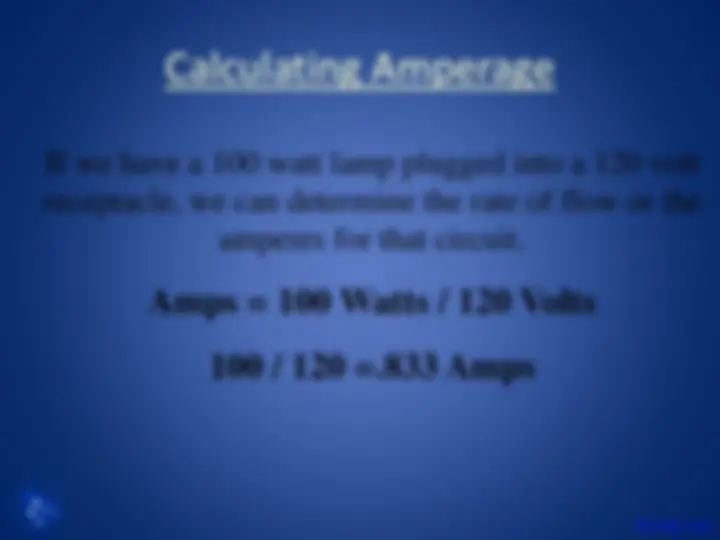
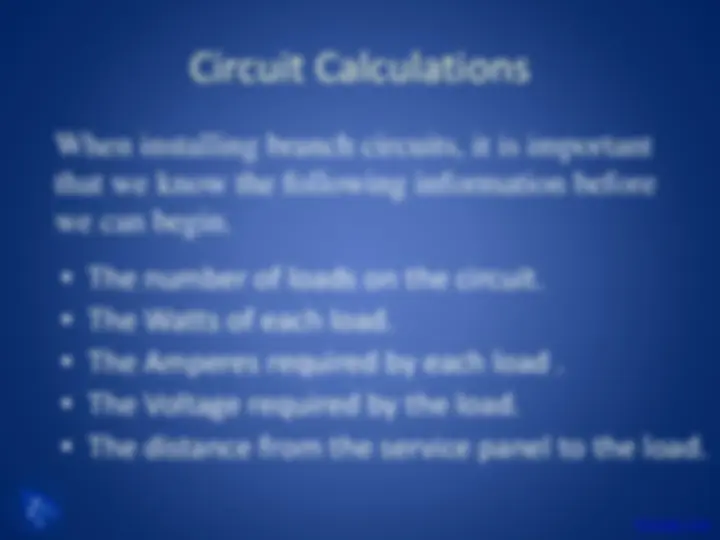
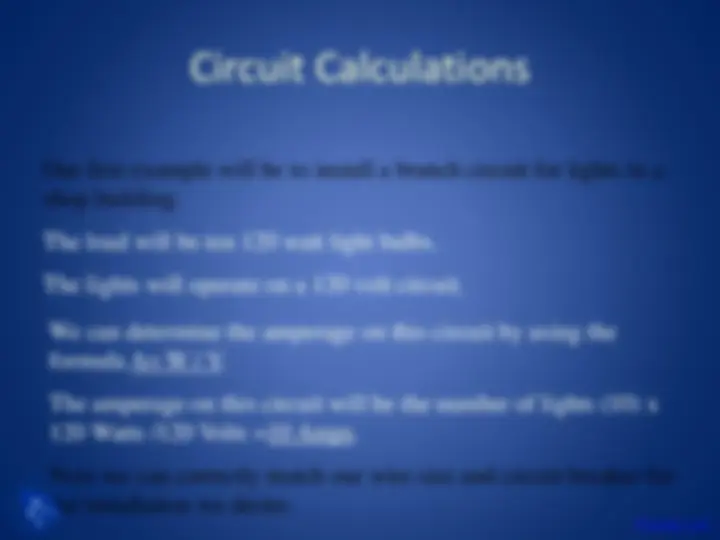
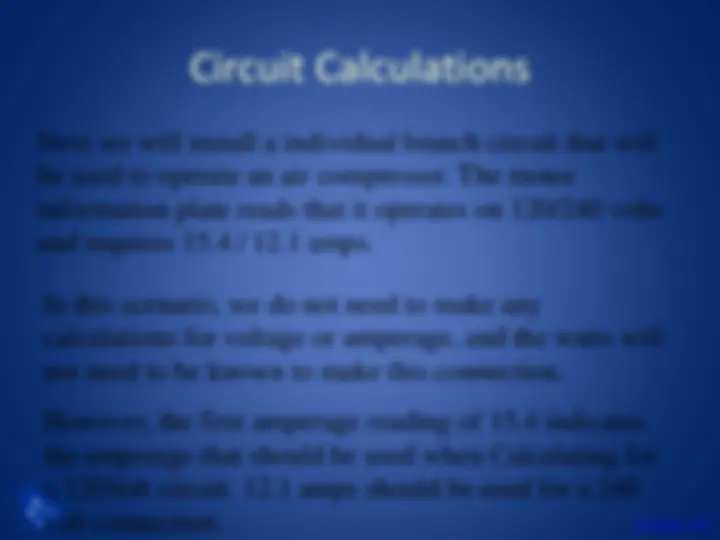



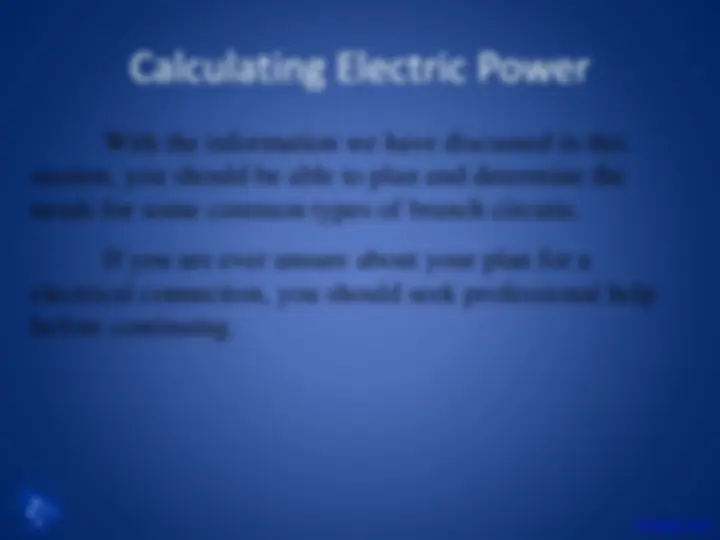


Study with the several resources on Docsity

Earn points by helping other students or get them with a premium plan


Prepare for your exams
Study with the several resources on Docsity

Earn points to download
Earn points by helping other students or get them with a premium plan
Community
Ask the community for help and clear up your study doubts
Discover the best universities in your country according to Docsity users
Free resources
Download our free guides on studying techniques, anxiety management strategies, and thesis advice from Docsity tutors
Instructions on how to calculate electrical requirements for various appliances and circuits, including formulas for determining amperage, watts, and volts. It covers the west virginia formula and examples of calculating amperage and watts for different appliances. It also discusses voltage drop and circuit capacity.
Typology: Slides
1 / 21

This page cannot be seen from the preview
Don't miss anything!














When installing new appliances, equipment, tools, or any type of electrical convenience, it is important to know the electrical requirements for the item that you wish to connect.
If we have a 100 watt lamp plugged into a 120 volt receptacle, we can determine the rate of flow or the amperes for that circuit.
If a water heater operates at 20 amps on a 240 volt circuit, what is the wattage of the appliance?
When installing branch circuits, it is important that we know the following information before we can begin.
Our first example will be to install a branch circuit for lights in a shop building.
The load will be ten 120 watt light bulbs.
The lights will operate on a 120 volt circuit.
We can determine the amperage on this circuit by using the formula A= W / V. The amperage on this circuit will be the number of lights (10) x 120 Watts /120 Volts =10 Amps. Now we can correctly match our wire size and circuit breaker for the installation we desire. Docsity.com
Next we will install a individual branch circuit for a hot tub. The hot tub operates two 3 HP pump motors which require 240 volts and 7.2 / 5.3 amps. The heater is a 240 volt, 5500 watt element. The air blower is a 240 volt, 2 amp motor. Now lets determine the size circuit interrupter we need.
The 2 motors will account for 14.4 amps. The air blower will account for 2 amps. We will have to calculate the amperage for the heater. A = W/V A = 5500 / 240 or Amps = 22. Our total amperes is 14.4 + 2 + 22.9 = 39. Now we can determine the wire size and the circuit interrupter size needed.
Voltage Drop As electricity travels through conductors, it meets resistance and looses pressure or volts. The farther it has to travel, the greater the drop in voltage. This is called Voltage Drop.
Sometimes we need to know if an existing general purpose branch circuit can provide service to an added load. An example of this would be plugging in an air conditioner to an existing receptacle. If the circuit already provides service to other loads such as a television or a stereo, then the amperage for each of those would need to be determined. If the air conditioner operates on 120 volts and 2000 watts, lets determine the amps.
A = W / V Amps = 2000 / 120 Amps = 16. This would be to much for a 15 amp circuit to run the air conditioner by itself. The circuit interrupter could be upgraded to a 20 amp interrupter if the wire size and receptacle ratings meet the requirements for a 20 amp circuit.